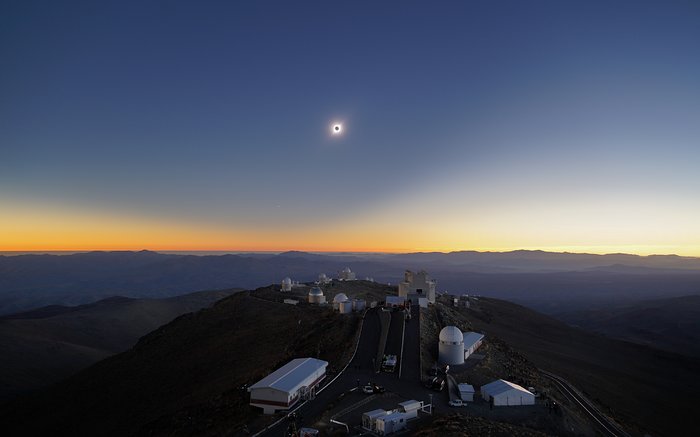At the same time as a solar eclipse was passing over Argentina and Chile on July 2, a massive hurricane was brewing in the Eastern Pacific ocean - and satellite cameras tracking the path of the eclipse have caught both in a stunning video.
The eclipse began over the South Pacific east of New Zealand as the Moon moved in between Earth and Sun, completely blocking the latter's light in what is known as a total solar eclipse. (When there's a ring of Sun peeking around the edge of the Moon, that's an annular eclipse.)
The path of totality then made its way east across the ocean, finally making landfall on the coast of Chile and moving across Argentina, treating residents to what for many is a once-in-a-lifetime sight.
Above: The eclipse as seen from the European Space Agency's La Silla Observatory in Chile.
Meanwhile, a major hurricane was percolating above the Pacific Ocean north of the equator, and just west of Mexico. That's Hurricane Barbara, which on Tuesday morning was officially declared a Category 4 storm, with winds up to 210 kilometres per hour (130 miles per hour).
Luckily, it's not expected to make landfall anytime in the next few days, sweeping across the Pacific in a southwest direction - what meteorologists call a "fish storm" (because it only affects the fish). It will draw closer to Hawaii, but by then the storm should be considerably weaker.
And both phenomena were captured on satellite cameras. The College of DuPage's NEXLAB satellite captured it all in glorious colour, processed into a glorious timelapse by meteorologist Dakota Smith.
A major hurricane.
A total solar eclipse.
Earth is breathtaking. pic.twitter.com/U1rnfvczUt
— Dakota Smith (@weatherdak) July 2, 2019
The National Weather Service also tweeted out a video filmed by weather satellites, and the NOAA's Geostationary Operational Environmental Satellite was on the case as well.
Not too often you catch a Category 4 hurricane and a solar eclipse occurring in the same satellite loop. pic.twitter.com/eFze8Z3avp
— NWS Kansas City (@NWSKansasCity) July 2, 2019
Although solar eclipses happen a few times a year, total solar eclipses are in the minority. The next isn't due to take place until December 2020, with the path of totality again cutting across Chile and Argentina.
You can check out NASA's eclipse website for a timetable of future eclipses.
#Space | https://sciencespies.com/space/you-must-watch-these-insanely-cool-videos-of-yesterdays-solar-eclipse-from-space/

No comments:
Post a Comment